[Editor’s Note: Army Mad Scientist welcomes guest blogger Aaron Horwood with today’s submission, judged as a semi-finalist in our recent Back to the Future Writing Contest. Tackling our writing prompt — How can history inform us about the future of competition and conflict? — Mr. Horwood revisits lessons learned from the Pacific Theater of Operations and our island-hopping campaign to explore the twin tyrannies of time and distance and their strategic implications for Large Scale Combat Operations (LSCO) sustainment.
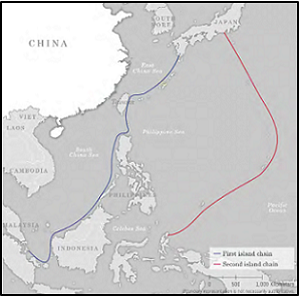
In any future conflict with China, our Joint Force’s lethality and overmatch are irrelevant if it cannot be sustained. Mr. Horwood’s Fortress Guam stands resolute in the face of the PLA’s onslaught on the Second Island Chain due to its three subterranean nuclear powerplants. While Lieutenant General Jonathan Wainwright‘s forces on Corregidor surrendered after six months of heroic defense in 1942, Guam’s defenders are able to “hold until relieved,” as directed by the White House and Pentagon. But will today’s leaders continue to heed Napoleon Bonaparte‘s timeless maxim — “The amateurs discuss tactics: the professionals discuss logistics“? — Read on!]
As America prepared to face down the Chinese Communist Party (CCP) in the 2020’s, the seeds of our failure were sown; we made having a “decisive” technological advantage into an idol. If we only sacrificed enough money on the altars of hypersonic 6th generation combat platforms, directed energy weapons, drone swarms, quantum AI integration, and orbital weapon platforms. victory would be assured.
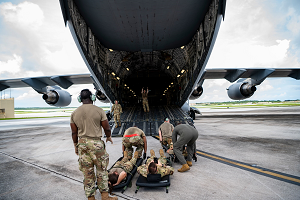
Now as I watch the last evacuation flights from the runway of Andersen Air Force Base in Guam, the reality of that hubris has been laid bare. Yes, we had won every battle in the last five months, but as our fuel runs out, nearly all Air Force assets and Navy surface ships are withdrawing to the West coast. While our nuclear submarine force is able to continue its deadly duel under the water, the Air Force simply can’t fly without fuel, and without their surface escorts, our nuclear-powered aircraft carriers are too vulnerable.
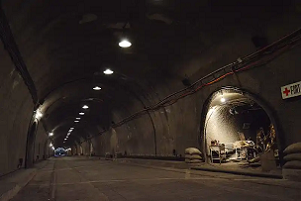
As the whine of jet engines fades, I began to hear the voices of the NCO’s directing Soldiers, Marines, and Guamanian volunteers building field fortifications and decoys on the surface of the island. Beneath my feet the work continues to expand the existing 150 km of tunnels we are dependent on which hide and protect our synthetic fuel plant, hangers, storerooms, weapons, quantum AIs, barracks, fabrication units, medical facilities, and so much more.
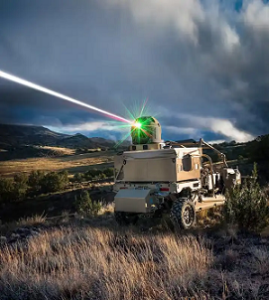
From a nearby tunnel entrance, a M97 Zeus Surface-to-Space Laser emerges; soon the night sky sees the flash of strange and straight lightning jumping from the ground into the night to destroy an unseen target as part of the ongoing battle to degrade enemy orbital intelligence, surveillance, and reconnaissance (ISR) capabilities in a 2,000 km radius around the island. In hides across the island, it is joined by every anti-drone, anti-missile, and anti-air energy weapons platform and their supporting radar arrays that could be pushed onto the island by air in the last two months. Supporting them are our small reserve of anti-ship, ground attack, and anti-air missiles; as well as the two squadrons of F35 joint strike fighters our synthetic fuel plant can sustain. Each of these weapon platforms work together to deny the enemy access, and hopefully provide a critical advantage to our forces when they push back West across the pacific.

We are not the only island fortress, but the others have only weeks or months left until they run out of fuel and can be bypassed. In caverns nearly 500 feet below ground are three Pele and one Vulcan class nuclear reactors that power our weapons and AI networks, circulate our air, purify our water, power our underground fabrications facilities and container farms, and produce a small but steady stream of synthetic jet fuel. Unfortunately, they provide less than a tenth of the original planned for energy we would need for the synthetic fuel plant to sustain Air Force and Navy operations in the area. The President and War Department ordered us to hold until relieved and we will do so, but few of my men believe that will only be for the six months they claim. Thankfully each reactor carries a three-year internal fuel supply, far more time than the CCP can accept, so they will have to come and land troops and pay in blood to remove us.
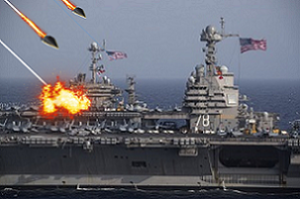
This was proven when the CCP accepted outrageous casualties in breaking the 7th Fleet in the South China Sea, destroying three of our aircraft carriers. The degrading of ISR assets and the long-range strike capabilities on their many nuclear-powered island bases proved to be decisive in the battle. They know the cost of taking Guam will be high, but the cost will be greater still if our Navy is allowed to regroup, return, and leverage the assets on this island.
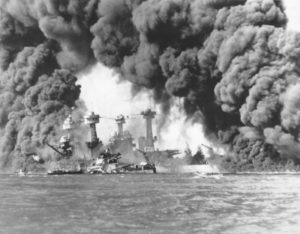
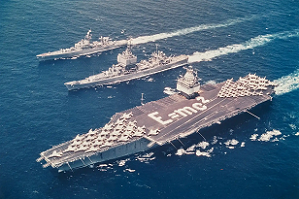
As I walk back to my command post I am reminded of the old saying that history repeats itself, first as a tragedy and then as a farce. In 1941, Imperial Japan faced a crippling oil embargo, and in response attacked Pearl Harbor to buy the time and space necessary to secure oil fields across the Pacific. Ironically, the Japanese failed to destroy Pearl Harbor’s fuel storage site or to prioritize targeting the 11 fleet oilers the Pacific fleet had of its required 72. At the time, Admiral Chester Nimitz remarked, “had the Japanese destroyed the oil, it would have prolonged the war another two years,” and forced a withdrawal of U.S. forces to the West coast. As it was, the Germans did prioritize commerce raiding and in 1942, they sank half of the Allied Tanker fleet; in short, we got lucky. By 1943, we had flipped the dynamic on the Japanese and through aggressive commerce raiding and seizing of oil fields, we were pushing West, bypassing fuel starved Japanese garrisons. By 1945, they were reduced to extracting oil from pine needles to protect Japan itself. It was this close call that drove the U.S. Navy to incorporate nuclear power into its carriers and submarines, to cut them free from the tether of fuel.
Unfortunately, too many of our leaders looked back and only saw how carriers changed the nature of naval warfare; the CCP saw the lesson we were taught and spent the intervening 100 years preparing. Then last year, facing oil sanctions in response to their blockade of Taiwan, they too launched a surprise attack. WWIII started on the morning of 25 December 2041 when CCP submarines and converted container ships scattered around our coasts launched swarms of drones and missiles targeting every American and Allied deep-water port, fuel refinery, and major piece of infrastructure within 500 miles of a major coastline. This was followed by unrestricted submarine warfare, prosecuted by dozens of manned and unmanned submarines that within a few months eliminated 70% 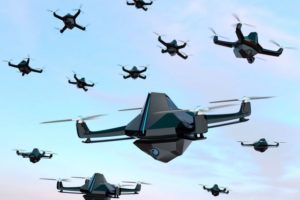 of the U.S, Merchant Fleet — none of the six resupply ships sent to Guam made it. While both sides forswore the first use of nuclear weapons, industrial scale warfare had returned to our world and our world was fundamentally changed.
of the U.S, Merchant Fleet — none of the six resupply ships sent to Guam made it. While both sides forswore the first use of nuclear weapons, industrial scale warfare had returned to our world and our world was fundamentally changed.
The supply chain modern society requires was fundamentally broken — economies ground to a halt, rolling brownouts became common, and soon mass starvation will be seen in many countries around the world that depend on food and fertilizer imports.
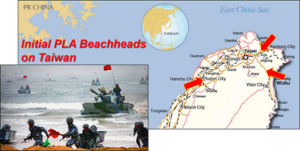 While CCP troops stormed into Korea and Taiwan, the U.S. Air Force and Navy returned the favor and ran rampant through Chinese merchant fleets and critical infrastructure to forcibly de-industrialize their country. Some pundits and talking heads expected the coming famine in China to result in a quick surrender. What they failed to realize is that the CCP leadership viewed
While CCP troops stormed into Korea and Taiwan, the U.S. Air Force and Navy returned the favor and ran rampant through Chinese merchant fleets and critical infrastructure to forcibly de-industrialize their country. Some pundits and talking heads expected the coming famine in China to result in a quick surrender. What they failed to realize is that the CCP leadership viewed 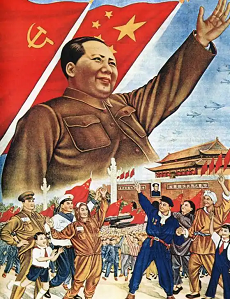 the looming deaths of tens of millions of their citizens as an opportunity to reset Chinese society, a second great leap forward. If our intelligence reports are to be believed, they are already culling the old, the poor, and there undesirables in order to reset the Chinese demographic time bomb, fix their imbalanced gender ratio, and finish their purges of the ethnic and religious minorities.
the looming deaths of tens of millions of their citizens as an opportunity to reset Chinese society, a second great leap forward. If our intelligence reports are to be believed, they are already culling the old, the poor, and there undesirables in order to reset the Chinese demographic time bomb, fix their imbalanced gender ratio, and finish their purges of the ethnic and religious minorities.
I finally arrive at the tunnel airlock that leads to my unit’s assembly area and underground barracks. A Voice of America broadcast drones in the background, giving hope-filled updates on the war effort and how soon things will change. I wonder if the will of the American people will break before that of our enemies, and if we can win the race against time to rebuild our industrial, military, and logistic capacities, before the enemy can consolidate its gains.
What we learned from World War II is that disruptive new technologies like aircraft carriers can dominate and change the battlefield; what we forgot — and the CCP exploited — is that regardless of how deadly our technology and training make us, without adequate logistical support, they don’t matter.
If you enjoyed this post, check out the following related content:
China Landing Zone content on the TRADOC G-2‘s Operational Environment Enterprise public facing page — including the BiteSize China weekly topics, ATP 7-100.3, Chinese Tactics, People’s Liberation Army Ground Forces Quick Reference Guide, and more!
The Operational Environment (2021-2030): Great Power Competition, Crisis, and Conflict, along with its source document
Enabling Future Game Changing Capabilities with Mobile Nuclear Power, by Dr. Juan Vitali, as well as the Study on the use of Mobile Nuclear Power Plants for Ground Operations report from the Deputy Chief of Staff G-4, U.S. Army, 26 October 2018
The Use of Renewable Energy to Power Military Vehicles, by then MSG Jessica Cho, one of the Sergeants Major Academy‘s semi-finalist submissions of merit featured in Sinews of War: Innovating the Future of Sustainment
“No Option is Excluded” — Using Wargaming to Envision a Chinese Assault on Taiwan, by Ian Sullivan
The U.S. Joint Force’s Defeat before Conflict, by then CPT Anjanay Kumar
How China Fights and associated podcast
China: Our Emergent Pacing Threat
Other People’s Wars: The US Military and the Challenge of Learning from Foreign Conflicts, with Brent L. Sterling, and associated podcast
Then and Now: Using the Past to Secure the Future by Warrant Officer Class 2 Paul Barnes, British Army
China: Building Regional Hegemony and China 2049: The Flight of a Particle Board Dragon, the comprehensive report from which this post was excerpted
The Most Consequential Adversaries and associated podcast, with GEN Charles A. Flynn
China’s PLA Modernization through the DOTMLPF-P Lens, by Dr. Jacob Barton
Competition in 2035: Anticipating Chinese Exploitation of Operational Environments
About the Author: Aaron Horwood is a former U.S. Army Engineer Captain and current Nuclear Engineering Ph. D. student at the University of South Carolina. His area of research focuses on the unique risk profile of mobile military nuclear power; he currently interns with the Special Reactor Concepts Group at Idaho National Lab and is a Shielding and Risk SME in the U.S. Army Chief of Engineers Nuclear Power Branch.
Disclaimer: The views expressed in this blog post do not necessarily reflect those of the U.S. Department of Defense, Department of the Army, Army Futures Command (AFC), or Training and Doctrine Command (TRADOC).



